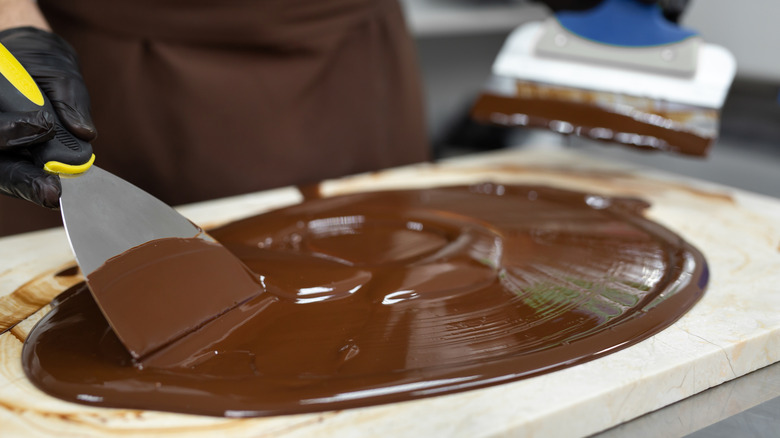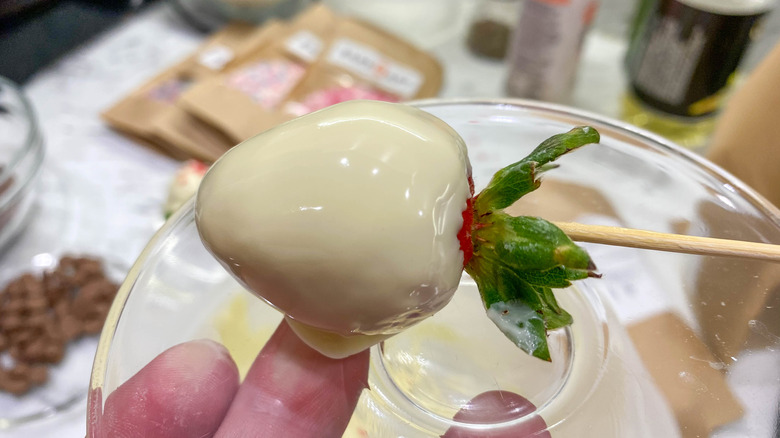Tempering Dark Chocolate Vs Milk: The Differences You Need To Know
We may receive a commission on purchases made from links.
That glossy sheen of a fresh new bar of chocolate and the reassuring snap when you break into it are results of the chocolate being tempered before it is molded into its final shape. Tempering is the process of melting chocolate and then working with it at a specific temperature (referred to as keeping it in temper) before cooling it so it solidifies. While perfecting it requires some practice, you can easily try tempering chocolate at home to create custom confections and decorate desserts.
However, different types of chocolate require different temperatures. For chocolate to be tempered, all its fats must be melted. Milk chocolate contains a higher proportion of added ingredients like milk fat, which makes it break down more easily. Conversely, dark chocolate has more cocoa fat and a higher melting point. Fewer ingredients also make chocolate more stable; another reason dark chocolate requires more heat to melt. For example, the award-winning dark chocolate that's considered the best in the world only contains cocoa and sugar. Popular store-bought chocolate bars, meanwhile, contain many more ingredients.
Since tempering occurs at very specific temperatures, you need a food thermometer like ThermoPro's digital instant-read tool to temper chocolate. In general, dark chocolate should be heated to 122 degrees Fahrenheit, while milk or white chocolate needs to reach 105 degrees Fahrenheit. All three kinds of chocolate must then be brought down to 90 degrees Fahrenheit and stirred consistently to temper. Dark chocolate can stay at or close to that temperature, while 84 to 86 degrees Fahrenheit is the sweet spot for working with melted milk or white chocolate. If done correctly, the chocolate will have a glossy finish and set in no more than five minutes at room temperature.
Why tempering chocolate is so complicated, and the easiest way to do it
Tempering chocolate doesn't only require it to be heated to the right temperature. It must also be held consistently at a specific temperature and agitated sufficiently to get that smooth, shiny texture. When done correctly, the fats present in the chocolate form stable, tightly knit fat crystals, giving it an even sheen and smooth texture. It also helps the chocolate solidify quickly, making it perfect for coating or molding. If chocolate isn't held at the right temperature or stirred enough, the fats form irregular and weak crystals, which means it may look dull and streaky, have a grainy texture, and not set completely solid.
Keeping it at a consistent 86 to 90 degrees Fahrenheit to stop it from setting is one of the most challenging aspects of tempering chocolate, milk and dark alike. There are multiple ways to do this, but the first step is to always ensure all the solids are melted by heating the chocolate to the aforementioned temperatures. This can be done in a simmering hot bath or with short bursts in the microwave, stirring regularly to ensure uniform heating. Don't forget to check the cocoa percentage of the chocolate to make sure you get it up to the right temperature. Next, add pieces of solid chocolate to lower the temperature and keep the chocolate at temper. This is a process called seeding. It can also be done with a block of solid, tempered chocolate, which can be added to the melted chocolate and then removed once it reaches the right temperature.

